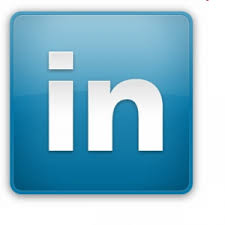
LinkedIn is a social networking platform for maintaining existing business contacts and to establish new connections. It has over 225 million registered users in more than 200 countries (as of June 2013), currently the largest platform of its kind. As an online social network for business professionals, it's different than other social networking sites like MySpace and Facebook because it's designed specifically for professional networking -- finding a job, discovering sales leads, connecting with potential business partners -- rather than simply making friends or sharing media like photos, videos and music.
Features
One purpose of the site is to allow registered users to maintain a list of contact details of people with whom they have some level of relationship, called Connections. Users can invite anyone (whether a site user or not) to become a connection. This list of connections can then be used in a number of ways:
- A contact network is built up consisting of their direct connections, the connections of each of their connections (2nd degree connections) and also the connections of second-degree connections (3rd degree connections). This can be used to gain an introduction to someone a person wishes to know through a mutual contact.
- It can then be used to find jobs, people and business opportunities recommended within a contact network.
- Employers can list jobs and search for potential candidates.
- Job seekers can review the profile of hiring managers and discover which of their existing contacts can introduce them.
- Users can post their own photos and view photos of others to aid in identification.
- Users can now follow different companies and can get notification about the new joining and offers available.
- Users can save (i.e. bookmark) jobs that they would like to apply for.
The "gated-access approach" (where contact with any professional requires either an existing relationship or the intervention of a contact of theirs) is intended to build trust among the service's users.
Revenue Model
LinkedIn also operates using a different business model than most social networking sites. LinkedIn makes money in two basic ways. First, the site charges users for certain services. If you want to send more than five introductions, you have to upgrade to one of the premium accounts (Personal Plus, Business or Pro). Same goes for sending InMail or receiving OpenLink messages. Posting job openings costs money on LinkedIn, as do other site services like reference searches and expedited customer service. But the way LinkedIn really makes the big bucks is through LinkedIn Corporate Solutions, a powerful tool for recruiters and corporate headhunters. When a registered LinkedIn user adds his professional and educational experience to his profile page, he's adding his personal information to the ever-expanding LinkedIn professional database. For a steep annual subscription fee (as high as $100,000 to $250,000 for some companies), LinkedIn Corporate Solutions supplies recruiters and headhunters with enhanced search tools and management software to find the most qualified "passive candidate.”
LinkedIn estimates that more than 200,000 of its members are professional recruiters.
 RSS Feed
RSS Feed